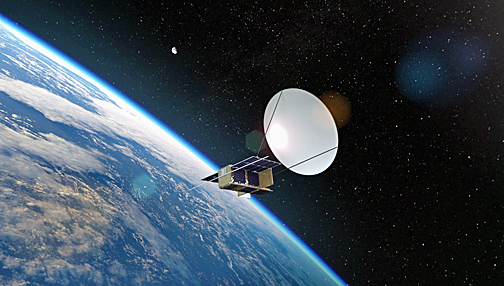
The startup NSLComm, which develops nanosatellite technology for high volume communications, is currently closing their series B funding round, reaching $6.25 million in total.
The round is led by strategic investors such as JVP, Liberty, OurCrowd, Hawk GF, and Cockpit Innovation of the El Al Group that has recently announced their partnership with Boeing and Lufthansa to support startups and innovative technologies focusing on the aviation and aerospace verticals. This is Cockpit’s first investment made within their new collaborative framework. The funding round will enable NSLComm to develop and build two satellites for future launching, in addition to the first satellite launch, which is scheduled for November 2018.
Since its inception in 2015 by Dr. Raz Itzhaki, Daniel Rockberger, and Danny Spiritus, NSLComm has focused the firm's work on developing a highly disruptive Israeli technology for satellite communications. Current nanosatellite technologies only allow communication rates of less than 10 Mbps in low orbit, which is used for observation, scientific research, and other applications outside communications. NSLComm’s innovative nanosatellite technology now offers data transfer rates of 1 Gbps, 100 times faster than current capacities available on the market.
This game-changing advancement will enable a wide variety of uses, including in-flight connectivity, backhauling connectivity, IoT networks across a global framework of satellites, and additional uses in the governmental, commercial, and private sectors.
Satellite communications is one of the world’s key infrastructures, propelling forward the rapidly evolving field of data communications, which enables the capacities of central technologies — from weather forecasting, through high-speed Internet and cellular networks, to commercial uses for diverse global players.
Satellites are commonly classified into two main categories, the large Geostationary Operational Environmental Satellites (GEO), and the smaller Low Earth Orbits (LEO). GEO satellites orbit the Earth at high altitudes to offer broad data ranges and rapid transmission, yet the cost of their building, launch, and operation is immensely high. LEO, on the other hand, are small-scale satellites circling in low Earth orbits that cost much less, but are also limited in their data capacity and communication rates.
NSLComm nanosatellites offer a breakthrough in transmission rates currently available in the smallsat class. Owing to the design and structure of their extremely flexible antennas, they can be folded to take-up extremely low volumes during launch and are programmed to open up and unfold back into their full length upon activation in space (the antennas “remember” their original form and shape). In this manner, the company can offer cost-effectiveness, with high-speed satellite communications services at drastically reduced prices and extremely higher rates than any other player in the field.

Artistic rendition of the NSLSat-1 smallsat.
NSLComm plans to launch its first satellite — NSLSat1 — in November of this year using the ISRO's PSLV launching vehicle in India. Three years only after inception, the startup has already gained leading clients in Israel and the U.S.A. and has created partnerships with a variety of funding entities and venture capitals, including Cockpit of the El Al Group that invests in innovative startups in the field of aviation and aerospace in collaboration with aviation giants Boeing and Lufthansa.
Dr. Raz Itzhaki, Co-Founder and CEO of NSLComm, stated that the idea for the company arrived out of an understanding that the satellite market is in dire need for sophisticated technology, offering high-speed communications over small-scale satellites. The company's antenna innovation will revolutionize the way in which fast data is transmitted, offering advanced applications for a wide variety of uses — governmental, civilian, and commercial. For example, if a global commercial player must now rely on external communication networks due to the astronomical costs of launching “its own” satellite, NSLComm's solutions enables it to launch a group of broadband nanosatellites that generate the rate of data exchange it requires, and this can be done cost-effectively at an affordable price.

